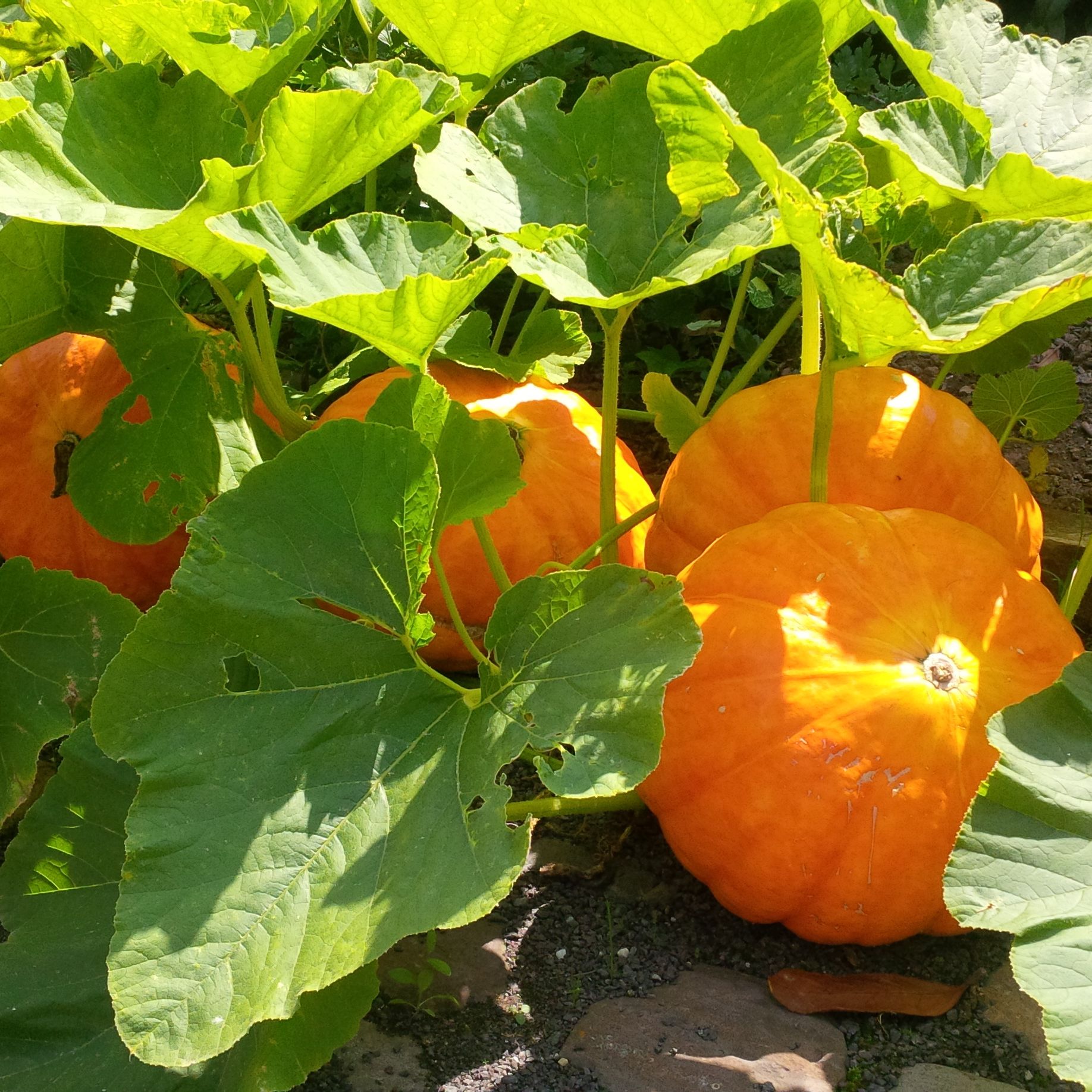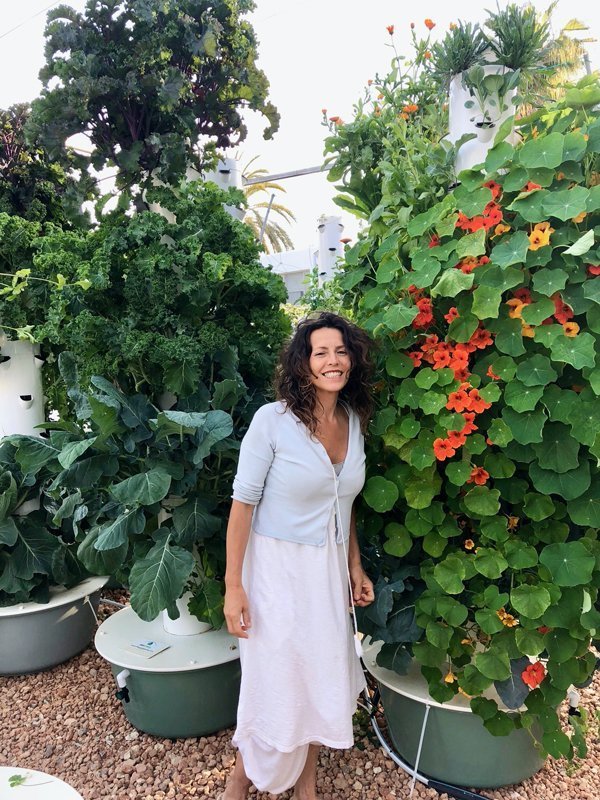Pumpkin flowers are not only a stunning addition to any garden, but they also come with a plethora of benefits. From their vibrant colors to their delicate fragrance, these flowers are a sight to behold. But their beauty is not the only reason to grow pumpkin flowers. They also attract beneficial insects, help with pollination, and can even be harvested for culinary uses. In this guide, you will discover everything you need to know about growing and enjoying these remarkable flowers, from planting tips to creative ways to incorporate them into your meals. Whether you’re an experienced gardener or just starting out, prepare to be captivated by the endless possibilities these pumpkin flowers offer.
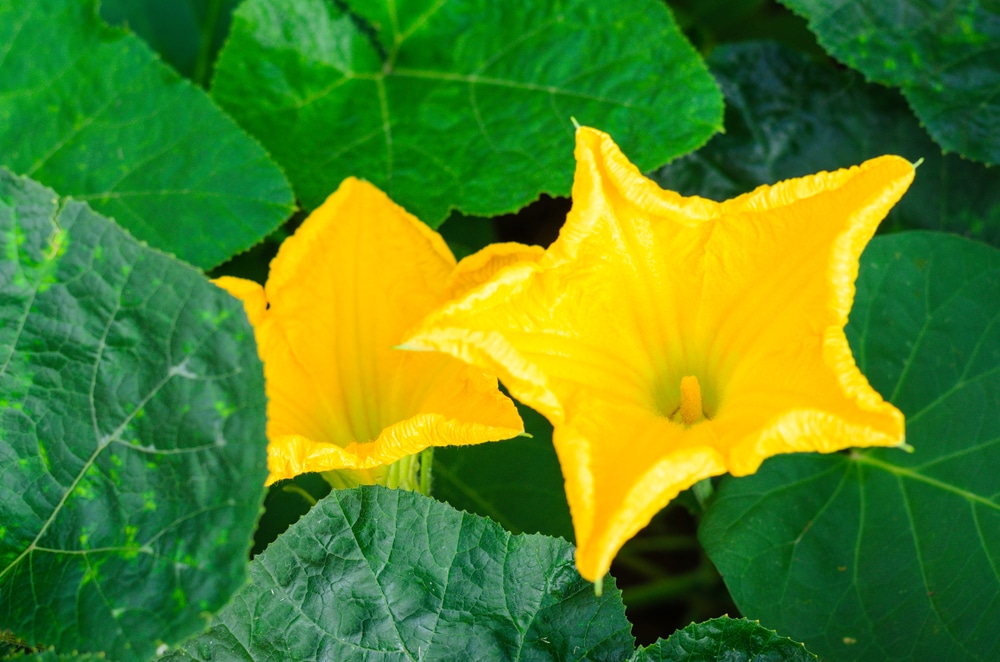
This image is property of www.garden.eco.
Health Benefits of Pumpkin Flowers
Pumpkin flowers, also known as pumpkin blossoms, are not only beautiful but also offer numerous health benefits. These delicate blooms are rich in nutritional value, packed with antioxidants, possess anti-inflammatory properties, promote heart health, and boost the immune system. Incorporating pumpkin flowers into your diet can be a wonderful way to enhance your overall well-being.
Nutritional Value of Pumpkin Flowers
Pumpkin flowers are a powerhouse of essential nutrients. They are abundant in vitamins A and C, which are known for their antioxidant properties. These vitamins help protect the body against damage from harmful free radicals. Additionally, pumpkin flowers contain minerals such as potassium, magnesium, and iron, which are crucial for maintaining proper body function. Including pumpkin flowers in your meals can provide you with a remarkable nutritional boost.
Antioxidant Properties
As mentioned earlier, pumpkin flowers are brimming with antioxidant properties. These antioxidants play a vital role in protecting the body from oxidative stress. Oxidative stress occurs when there is an imbalance between free radicals and antioxidants in the body, which can lead to chronic diseases such as cancer and cardiovascular disorders. By incorporating pumpkin flowers into your diet, you can increase your antioxidant intake and support your body’s defense against these harmful conditions.
Anti-inflammatory Properties
Inflammation is a natural response by the body to injury or infection. However, chronic inflammation can contribute to various health problems, including heart disease, arthritis, and diabetes. Pumpkin flowers possess anti-inflammatory properties, primarily due to the presence of beta-carotene and other compounds. Consuming pumpkin flowers can help reduce inflammation in the body and potentially alleviate the symptoms of inflammatory conditions.
Promote Heart Health
Maintaining a healthy heart is essential for overall well-being. Pumpkin flowers contain nutrients that support heart health, such as potassium and fiber. Potassium helps regulate blood pressure, while fiber aids in controlling cholesterol levels. By incorporating pumpkin flowers into your diet, you can promote a healthy cardiovascular system and reduce the risk of heart disease.
Boost Immune System
A robust immune system is crucial for defending the body against infections and diseases. Pumpkin flowers are packed with vitamins, including vitamin C, which is known for its immune-boosting properties. Vitamin C stimulates the production of white blood cells, which are responsible for fighting off infections. By consuming pumpkin flowers, you can provide your immune system with the support it needs to function optimally.
Culinary Uses of Pumpkin Flowers
Pumpkin flowers are not only beneficial for your health but also versatile in the kitchen. The edible parts of pumpkin flowers are the blossoms themselves and the tender, young stems attached to them. These parts can be utilized in a variety of culinary creations, adding a unique flavor and visual appeal to your dishes.
Cooking Methods for Pumpkin Flowers
There are several cooking methods for pumpkin flowers, each offering a delightful way to enjoy their delicate taste. They can be sautéed, stir-fried, stuffed, or even battered and fried to create a crispy and delicious appetizer. The key is to preserve the flavor and texture of the blossoms while incorporating them into your recipes. Experimenting with different cooking methods can be a fun and adventurous way to explore the culinary possibilities of pumpkin flowers.
Recipe Ideas for Using Pumpkin Flowers
If you’re wondering how to incorporate pumpkin flowers into your meals, here are a few recipe ideas to get your creative juices flowing:
-
Stuffed Pumpkin Flowers: Gently stuff the blossoms with a mixture of cheese, herbs, and spices, then bake until the filling is melted and the flowers are tender. This delectable appetizer is sure to impress your guests.
-
Pumpkin Flower Stir-Fry: Add pumpkin flowers to your favorite stir-fry recipe for a burst of color and flavor. Pair them with other fresh vegetables and your choice of protein for a balanced and nutritious meal.
-
Pumpkin Flower Fritters: Dip the blossoms in a light batter and fry them until golden brown. These crispy fritters make a delightful snack or side dish.
-
Pumpkin Flower Salad: Toss fresh pumpkin flowers with mixed greens, cherry tomatoes, and a tangy vinaigrette for a refreshing and vibrant salad.
The possibilities are endless when it comes to culinary creations with pumpkin flowers. Don’t be afraid to experiment and discover your own favorite recipes using these versatile blooms.
Growing Pumpkin Flowers
Do you want to experience the joy of growing your own pumpkin flowers? With a little effort and care, you can have a thriving pumpkin plant that yields beautiful blooms. Here’s a step-by-step guide to help you get started on your gardening adventure:
Choosing the Right Pumpkin Variety
Before you begin growing pumpkin flowers, it’s important to choose the right pumpkin variety. There are various types of pumpkins, each with its unique characteristics. Some pumpkins are specifically bred for their flowers, while others are more focused on producing large, edible fruits. Consider your preferences and objectives when selecting the variety that suits your needs.
Preparing the Soil
Prepare the soil where you plan to grow your pumpkin flowers. These plants thrive in well-drained soil that is rich in organic matter. Begin by removing any weeds or debris from the area. Amend the soil with compost or well-rotted manure to improve its fertility. This will provide a nutrient-rich environment for your pumpkin plants to thrive.
Planting Pumpkin Seeds
Once the soil is prepared, it’s time to plant your pumpkin seeds. Choose a sunny spot in your garden that receives at least 6-8 hours of direct sunlight per day. Dig a small hole and place a few seeds in each hole, ensuring they are spaced evenly. Cover the seeds with soil and gently water the area.
Caring for Pumpkin Plants
Pumpkin plants require regular care to ensure optimal growth and blooming. Water your plants regularly, keeping the soil evenly moist but not saturated. Avoid overwatering, as this can lead to root rot. Additionally, it’s essential to provide support for your pumpkin vines, as they can become heavy and need assistance in staying upright. Use trellises or stakes to support the vines and prevent them from sprawling on the ground.
Harvesting Pumpkin Flowers
As your pumpkin plants grow, you will begin to see vibrant blossoms forming. The ideal time to harvest pumpkin flowers is when they are fully open but not yet wilting. Gently twist the flower off the plant, making sure to remove the pistil at the base. A word of caution: it’s important not to harvest all the flowers, as they play a crucial role in pollination and seed production. Allow some flowers to remain on the plant to ensure a healthy harvest.
Pest and Disease Management
While growing pumpkin flowers can be a rewarding experience, it’s important to be aware of the pests and diseases that can affect your plants. By implementing natural pest control methods and taking preventive measures, you can protect your pumpkin flowers from common issues.
Common Pests Affecting Pumpkin Flowers
Some common pests that may affect pumpkin flowers include aphids, squash bugs, and cucumber beetles. These pests can cause damage to the leaves, stems, and flowers of your plants. It’s essential to regularly inspect your plants for signs of infestation, such as yellowing leaves, wilting, or the presence of insects. Early detection can help prevent the spread of pests and minimize damage.
Natural Pest Control Methods
There are several natural pest control methods you can employ to keep your pumpkin flowers protected. One effective method is handpicking the pests off the plants and disposing of them. Additionally, you can introduce beneficial insects, such as ladybugs or lacewings, to your garden. These insects prey on common pumpkin flower pests and help keep their populations in check. Another natural option is to use organic insecticidal soaps or neem oil sprays to deter pests from attacking your plants.
Common Diseases Affecting Pumpkin Flowers
Pumpkin flowers are susceptible to various diseases, including powdery mildew, downy mildew, and bacterial wilt. These diseases can affect the overall health and productivity of your plants. It’s important to maintain good hygiene in the garden, such as removing infected plant debris and avoiding overhead watering, as these practices can help prevent the spread of diseases.
Prevention and Treatment Options
Prevention is key when it comes to managing diseases in your pumpkin flowers. Planting disease-resistant varieties, practicing crop rotation, and providing proper ventilation can help minimize the risk of infections. If diseases do occur, various treatment options are available, including the use of organic fungicides and implementing cultural practices such as removing infected plant parts. Consulting with a local gardening expert or extension service can provide valuable guidance on disease prevention and treatment specific to your region.
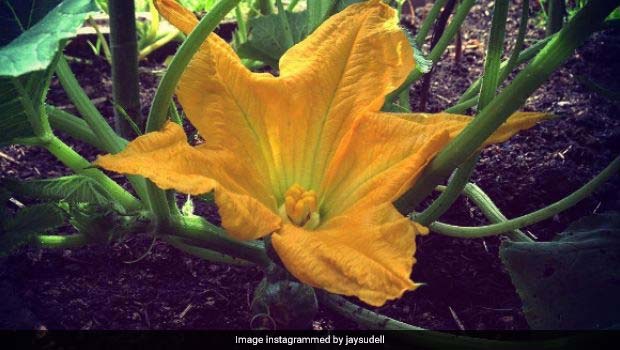
This image is property of i.ndtvimg.com.
Decorative Uses of Pumpkin Flowers
Pumpkin flowers aren’t just limited to the garden or the kitchen; they can also be utilized for decorative purposes. Their vibrant colors and unique shapes make them a perfect addition to floral arrangements and various DIY projects.
Using Pumpkin Flowers in Floral Arrangements
Pumpkin flowers can be combined with other blooms and foliage to create stunning floral arrangements. Their bright orange or yellow hues provide a pop of color, while their delicate petals add a touch of elegance. Whether you’re creating a centerpiece for a special occasion or a simple bouquet for your home, incorporating pumpkin flowers can give your floral arrangements a unique and seasonal charm.
Pumpkin Flower Crafts and DIY Projects
If you’re feeling crafty, pumpkin flowers can be used in various DIY projects. Drying the flowers and preserving them can allow you to create beautiful wreaths or decorative wall hangings. You can also press pumpkin flowers and use them in handmade cards or scrapbooking projects. The possibilities are endless, and letting your creativity shine through these DIY projects can be a fantastic way to celebrate the beauty of pumpkin flowers.
Traditional and Medicinal Uses
Pumpkin flowers have been valued in traditional medicine for centuries. Different cultures have recognized their beneficial properties and incorporated them into remedies for common ailments.
Pumpkin Flowers in Traditional Medicine
In traditional medicine, pumpkin flowers have been used to address various health issues. They have been believed to have diuretic properties, helping to alleviate water retention and promote urinary health. Additionally, pumpkin flowers have been used to stimulate lactation in breastfeeding women and support reproductive health. While further research is needed to validate these claims, pumpkin flowers continue to be valued in traditional medicine practices.
Health Benefits of Pumpkin Flower Tea
One popular way to harness the medicinal properties of pumpkin flowers is by preparing and consuming pumpkin flower tea. This tea is made by steeping dried pumpkin flower petals in hot water. Pumpkin flower tea is believed to have diuretic, anti-inflammatory, and immune-boosting properties. It is often consumed to support urinary health, reduce inflammation, and strengthen the immune system. Drinking pumpkin flower tea can be a soothing and beneficial addition to your wellness routine.
Pumpkin Flower Remedies for Common Ailments
Apart from tea, there are various pumpkin flower remedies that have been used for common ailments. For example, a poultice made from mashed pumpkin flowers can be applied topically to reduce skin inflammation and irritation. Additionally, consuming pumpkin flower-infused honey is believed to have a calming effect on the digestive system. These remedies have been passed down through generations and are valued for their potential healing properties.
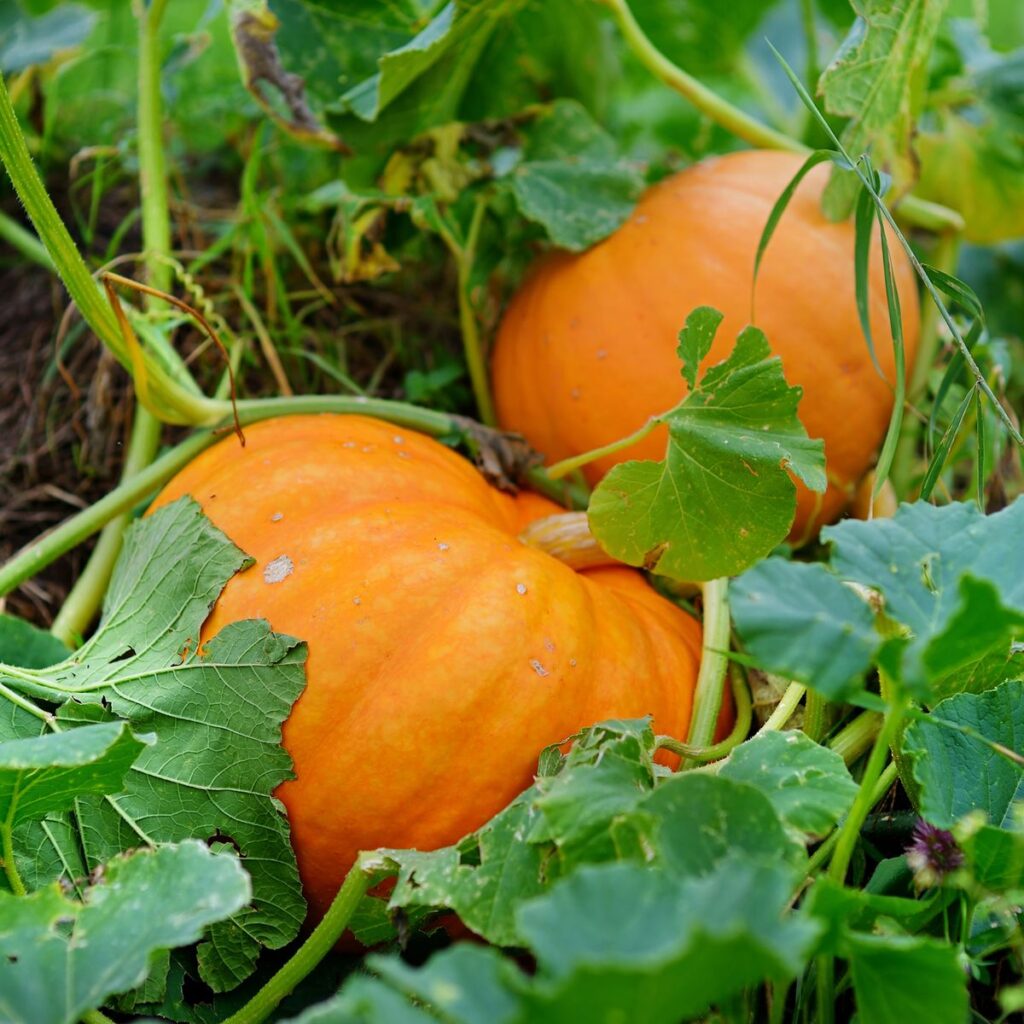
This image is property of hips.hearstapps.com.
Pumpkin Flower Festivals and Celebrations
Pumpkin flowers have captured the admiration and fascination of people around the world. To celebrate the beauty and significance of these blooms, numerous pumpkin flower festivals and celebrations take place annually.
Highlighted Festivals Around the World
One noteworthy festival is the Pumpkin Flower Festival held in Gyeonggi Province, South Korea. This festival showcases various pumpkin flower-themed exhibitions, including art installations, flower arrangements, and cultural performances. Visitors can immerse themselves in the vibrant colors and fragrant scents of pumpkin flowers while partaking in traditional Korean festivities.
Another remarkable event is the Pumpkin Festival held in Morton, Illinois, United States. This festival features a grand parade, pumpkin-themed contests, and displays of giant pumpkins and pumpkin flowers. Visitors can indulge in delicious pumpkin-inspired foods and beverages while enjoying live entertainment and family-friendly activities.
Activities and Events During Pumpkin Flower Festivals
During pumpkin flower festivals, visitors can engage in an array of activities that celebrate these magnificent blooms. They can participate in pumpkin flower arranging workshops, where experts share their knowledge and guide attendees in creating stunning floral displays. Additionally, culinary enthusiasts can join cooking demonstrations that showcase the usage of pumpkin flowers in various dishes. The festivals also offer opportunities to explore local arts and crafts, as well as educational exhibits highlighting the cultural and historical significance of pumpkin flowers.
Attending a pumpkin flower festival is a fantastic way to appreciate the beauty of these blossoms while experiencing the vibrant cultures that surround them. It’s an opportunity to immerse oneself in the festivities and celebrate the joy and wonder that pumpkin flowers bring.
Understanding Pollination and Seed Production
To fully appreciate the lifecycle of pumpkin flowers, it’s important to understand the process of pollination and seed production. Bees and other insects play a vital role in this process, ensuring the reproduction and survival of pumpkin plants.
The Role of Bees and Insects in Pollination
Pumpkin flowers rely on bees and other insects for pollination. Bees are attracted to the vibrant colors and sweet nectar of the blossoms. As they collect nectar, they inadvertently transfer pollen from the male flower’s stamen to the female flower’s stigma, allowing fertilization to occur. Without the assistance of bees and insects, the pollination process would be hindered, resulting in a lack of fruit production.
Hand-Pollination Techniques
In some cases, hand-pollination may be necessary to ensure successful fruit set. This technique involves manually transferring pollen from the male flowers to the female flowers using a small brush or cotton swab. Hand-pollination can be particularly useful in situations where there is a limited number of pollinators available or when environmental conditions are unfavorable for insect activity. By taking an active role in the pollination process, you can increase the chances of a bountiful pumpkin harvest.
Collecting and Storing Pumpkin Flower Seeds
After successful pollination and fruit development, pumpkin flowers produce seeds that can be collected and stored for future planting. To collect pumpkin flower seeds, allow the fruits to fully mature and ripen on the vine. Once the pumpkins are ripe, carefully cut open the fruits, remove the seeds, and rinse them to remove any remaining flesh or pulp. Allow the seeds to dry thoroughly before storing them in a cool, dry place. Properly stored pumpkin flower seeds can remain viable for several years, allowing you to continue growing these beautiful flowers for seasons to come.
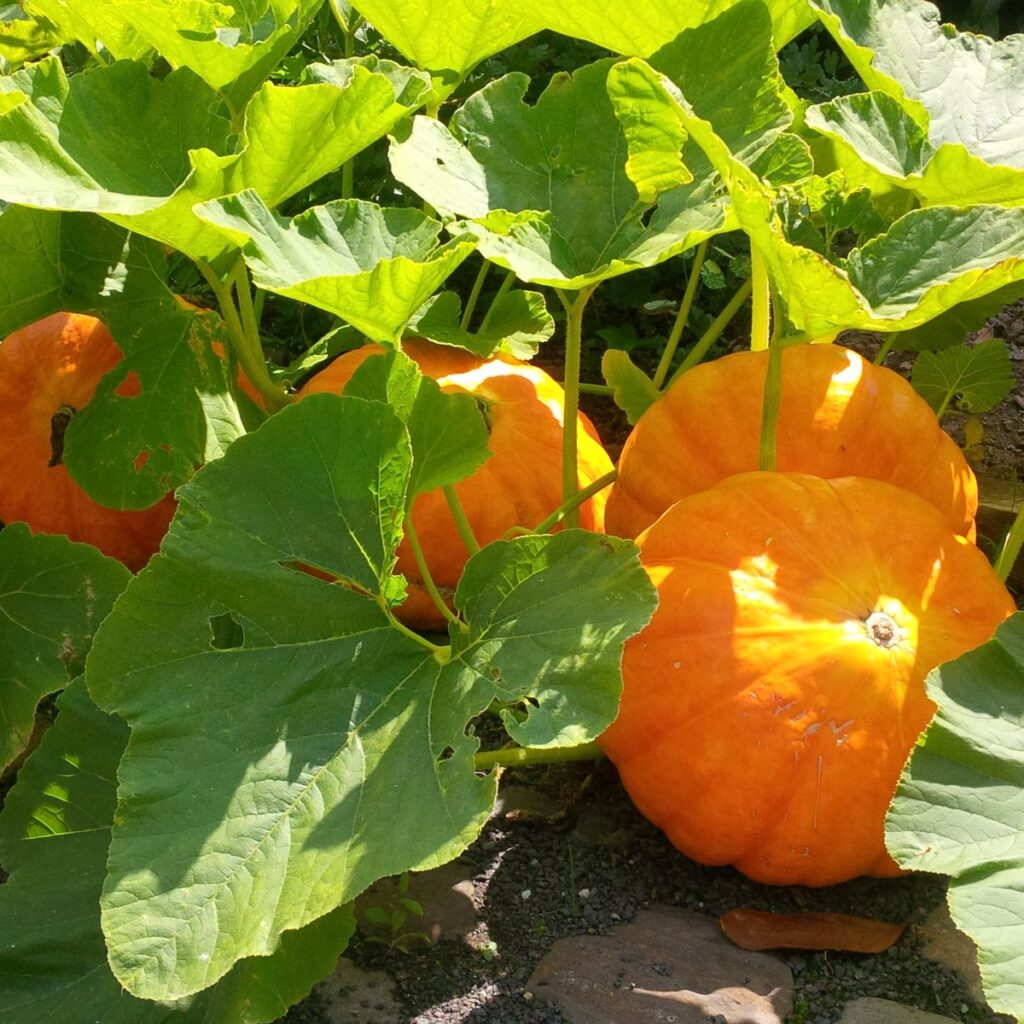
This image is property of hips.hearstapps.com.
Environmental Benefits of Pumpkin Flowers
In addition to their aesthetic and health benefits, pumpkin flowers offer various environmental advantages. By including these blooms in your garden, you can support pollinators and biodiversity, reduce your carbon footprint, and even contribute to composting efforts.
Supporting Pollinators and Biodiversity
Pumpkin flowers play a crucial role in supporting pollinators and promoting biodiversity. Bees, butterflies, and other insects are attracted to the vibrant colors and sweet nectar of these blooms. By providing a food source for these pollinators, pumpkin flowers help ensure the continued reproduction of various plant species. Supporting pollinators also contributes to the overall health of ecosystems and helps maintain biodiversity.
Reducing Carbon Footprint
Growing your own pumpkin flowers can significantly reduce your carbon footprint. By cultivating these plants in your garden, you reduce the need for transporting flowers from distant locations. Furthermore, homegrown pumpkin flowers eliminate the use of harmful pesticides and chemicals often associated with commercial flower production. By practicing sustainable gardening techniques, you can contribute to a greener and more environmentally friendly lifestyle.
Composting Pumpkin Flower Waste
Pumpkin flowers produce organic waste, such as discarded petals or wilted blooms, which can be composted. Composting is an eco-friendly method of managing organic waste and reducing landfill contributions. By adding pumpkin flower waste to your compost pile, you can help create nutrient-rich soil amendments that improve the health and fertility of your garden. Composting is a natural and sustainable way to recycle organic materials and close the nutrient loop within your own backyard.
Preserving Pumpkin Flowers for Longevity
Preserving the beauty of pumpkin flowers allows you to enjoy their vibrant colors and unique characteristics long after their blooming season has passed. Whether you choose to dry, freeze, or preserve them in oil or vinegar, these preservation methods provide an opportunity to extend the lifespan of these delicate blooms.
Drying Pumpkin Flowers
Drying pumpkin flowers is a popular preservation method that allows you to enjoy their beauty for an extended period. Simply gather a bunch of fresh flowers and tie them together using a string or rubber band. Hang the flowers upside down in a well-ventilated, dark area. Allow them to dry for several weeks until they become brittle. Dried pumpkin flowers can be used in various crafts, such as wreaths or wall hangings, or displayed in vases for a touch of seasonal beauty.
Freezing Pumpkin Flowers
Freezing pumpkin flowers is another method for preserving their vibrant colors and freshness. Begin by blanching the flowers in boiling water for a few seconds, then transfer them into an ice bath to cool rapidly. Once cooled, pat dry the flowers and place them on a baking sheet lined with parchment paper. Flash freeze them for a few hours, then transfer the flowers to airtight containers or freezer bags for long-term storage. Frozen pumpkin flowers can be used in soups, stews, or other cooked dishes, adding a visually appealing element to your meals.
Preserving Pumpkin Flower Petals in Oil or Vinegar
Preserving pumpkin flower petals in oil or vinegar allows you to capture their essence and incorporate their flavors into various culinary creations. To preserve them in oil, gently rinse the petals and pat them dry with a clean cloth. Place the petals in a clean, sterile jar, then cover them with a high-quality oil, such as olive or sunflower oil. Seal the jar tightly and store it in a cool, dark place for several weeks to allow the flavors to infuse. Similarly, to preserve petals in vinegar, follow the same steps but replace the oil with vinegar. The resulting infused oil or vinegar can be used in dressings, marinades, or other recipes that could benefit from the delicate flavor of pumpkin flowers.
Preserving pumpkin flowers using these methods allows you to explore the versatility and longevity of these delicate blooms. Whether you choose to display them in dried arrangements, add them to your culinary creations, or simply cherish them as keepsakes, preserved pumpkin flowers are a unique and beautiful reminder of the fleeting beauty of nature.
In conclusion, pumpkin flowers offer a multitude of benefits and opportunities for enjoyment. From their nutritional value and health benefits to their culinary uses and decorative potential, these versatile blooms are a delight in every aspect. Whether you choose to grow them in your garden, participate in pumpkin flower festivals, or explore their traditional and medicinal uses, pumpkin flowers are sure to captivate and inspire you. Embrace the beauty and benefits of pumpkin flowers and uncover the endless possibilities they hold. Happy growing, experimenting, and indulging in all that pumpkin flowers have to offer.

This image is property of hips.hearstapps.com.

